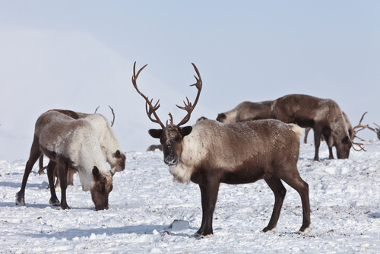THE Tundra is known for being the biome coldest on Earth!There, the temperatures are often below zero, which makes their environment with very different characteristics. of those that we see, for example, in Brazilian biomes, where the presence of animals adapted to heat and large trees. In Tundra, small vegetation and fauna adapted to the freezing cold predominate.
But why so cold?We know that there is a relationship between thelatitude and climate. Thus, the closer we are to the Earth's poles, the lower the temperatures. Tundra is located precisely in these areas, more precisely in the Arctic region, near the North Pole, so its species are adapted to this type of environment.
We can say that the location of the Tundra, more precisely, is in the northern portion of North America, Europe and Russia. These areas are known as the regions with the lowest possible temperatures to provide conditions for the existence of life. The climate type is polar, which is very cold, dry and with little rain.
As the climate is very cold, in addition to the shallow soils and lack of light, which occurs more prominently during the midsummer, the trees could not be bigger than small shrubs, grasses, lichens and mosses, all too far apart. each other. During the summer, when maximum temperatures reach 10ºC, this vegetation develops, becoming less dense. But when winter and its -20°C temperature arrive, the ground freezes again and the number of plants decreases..
It is not surprising that, with these unfavorable conditions, the tundra does not present great natural diversity. Existing animals feed on the sparse vegetation and serve as food for some carnivores. Most of them migrate to other areas during the winter, like most birds and large mammals. Others, however, remain in the region, such as the polar bear, foxes, arctic hares, caribou and most insects.

Caribou, typical animals of the Tundra
In addition to the Tundra located in the Arctic region - and therefore called the arctic tundra – we also have the alpine tundra, which is formed in mountainous regions, where it is also cold, especially the Alps, a mountain range in Europe. Because of this distribution, the tundra reaches up to one fifth of the Earth's surface, which makes its necessary preservation both for the conservation of its environment and for the existence of its fauna species and flora.
By Me. Rodolfo Alves Pena

